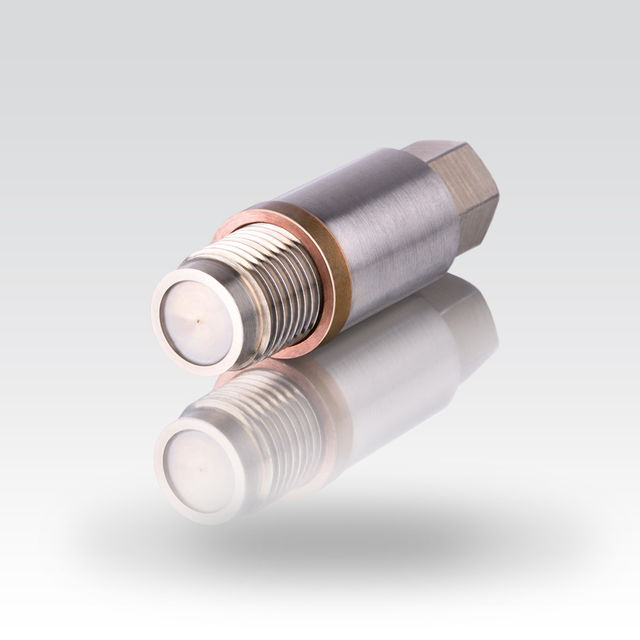

.jpg)
This deformation results in a flow of electric charge (which lasts for a period of a few seconds). When pressure is applied to a crystal, it is elastically deformed. This characteristic makes these sensors unsuitable for the measurement of static forces or pressures but useful for dynamic measurements. The fundamental difference between these crystal sensors and static-force devices such as strain gauges is that the electric signal generated by the crystal decays rapidly. When pressure, force or acceleration is applied to a quartz crystal, a charge is developed across the crystal that is proportional to the force applied (Figure 3-8). Depending on which phenomenon is used, the crystal sensor can be called electrostatic, piezoresistive, or resonant. Piezoelectric presssure sensors can further be classified according to whether the crystal's electrostatic charge, its resistivity, or its resonant frequency electrostatic charge is measured. IEPE pressure sensors can be connected with an external IEPE coupler to a DAQ or directly to IEPE-DAQ.Pressure sensor What is a pressure sensor? IEPE pressure sensors need to be connected to a current (IEPE) coupler for power supply and decoupling the voltage signal from the power supply signal. However, a standard two-wire cable is sufficient to power the sensor and transmit the voltage signal.

mV/bar or mV/psi).Ĭontrary to PE sensors, IEPE sensors feature built-in electronics that need to be powered. So, the sensitivity is given as millivolt per unit of pressure (e.g. Pressure applied to an IEPE sensor produces a positive voltage signal (hence the positive sensitivity of IEPE sensors). IEPE stands for Integrated Electronics Piezo Electric and refers to an industry standard for piezoelectric sensors with integrated electronic circuits that convert a charge into a voltage signal. When to use a piezoelectric pressure sensor with voltage output (IEPE)? Adjustable measuring ranges with only one pressure sensor (measuring range is adjustable at charge amplifier).Measurement at extremely low or very high temperatures (no electronics in the sensor).Piezoelectric pressure sensors with charge output are optimal for: PE (and IEPE) pressure sensors are both applicable for the measurement of dynamic pressure profiles and pressure pulsations. There are charge amplifiers on the market with analog outputs (which can then be connected to a DAQ) as well as digital charge amplifiers with an integrated DAQ.Ĭontrary to IEPE sensors, PE sensors don’t need to be powered, as a charge signal is produced when pressure is applied to the piezoelectric material.

This converts the charge into a voltage signal. However, a low-noise high-impedance cable should be used to connect the sensor to the charge amplifier. Pressure applied to a PE sensor produces a negative charge signal (hence the negative sensitivity of PE sensors), which then is converted into a positive voltage signal by the external charge amplifier. PE pressure sensors emit a charge signal hence the sensitivity is given as picocoulombs per unit of pressure (e.g. When to use a piezoelectric pressure sensor with charge output (PE)? Other known trademarks for the IEPE technology are Piezotron®, ICP®, etc.


 0 kommentar(er)
0 kommentar(er)
